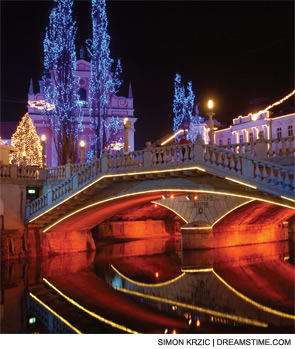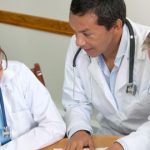
During the past few years, I have had the privilege, honor, and good fortune to attend international rheumatology meetings in Europe. While I would like to think that the invitations to go overseas reflect the current work from my laboratory (our studies on microparticles actually are pretty nifty), I also believe that seniority has something to do with my presence at the lectern. Honestly, I have been around quite a while and, therefore, gained a perspective on the field that only experience can bring. Also, there is a serious shortage of young academic rheumatologists in America, and old guys like me have to carry the flag to keep the Stars and Stripes flying at international congresses.

I, of course, like to travel, and, undaunted by showers of volcanic ash, train strikes in France, and cruise ships lurching wildly in North Atlantic storms (all recounted in the pages of The Rheumatologist), I journey to Europe where, away from home and with the leisure of time, I can reflect on life and the state of my subspecialty. The first few days are rocky, but once the effects of jet leg, Ambien, and cognac (a fitting denouement for the welcoming dinner) abate (cognac definitely needs a REMS), the world somehow looks clearer. As writers like The New York Times’ Thomas Friedman have emphasized repeatedly, the world is getting flatter, smaller, or closer, whatever your choice of metaphor.
Time was, Europe was a different place from America and, if you stayed in a hotel on the Left Bank or near the Spanish Steps, you were cautioned not to drink the water lest you become infected with amoebas or some other dreaded parasite that would launch your bowel into a perpetual high gear. Now, of course, we import water from Europe (Evian, Perrier, San Pellegrino), with more remote and obscure sources being sought every day because of their special medicinal properties from rare salts and minerals. Just as modern transportation makes it easy to ship a commodity as abundant and mundane as water around the world, it makes it easy to jet an American rheumatologist to give an hour-long lecture.
Meetings Still Have European Flavor
Despite many similarities with their U.S. counterparts, meetings in Europe have a unique character and style. The congress centers often are distant from the old part of the city (and hotels and restaurants) in a blander, less distinctive area where enough land was available to construct an expanse needed to house conferences with thousands of attendees. Although the average ancient European cathedral could hold the plenary session of the European League Against Rheumatism (EULAR) Congress, the usual venues are modern structures with all new-fangled electronic doodads that orchestrate today’s medical meetings, whether in Atlanta, Copenhagen, or Kyoto. Every lecture hall and conference room has an electronic panel board for light and sound that looks like that of mission control in the heyday of the Apollo space program.
On a recent trip to Europe, where I gave a lecture on DNA circulating in the blood (bottom line: it’s in microparticles), I walked about 20 minutes each way to the congress center from my hotel on a narrow, twisting street that looked to be right out of a scene from “The Third Man.” While I could have taken the bus, I like to get up front and personal with a city, taking in the architecture, peering into shop windows, inhaling the aroma of food from the local restaurants. Fortunately, most people in Europe speak English, so that, if I get lost, someone easily can set me in the right direction.
As I have observed on several trips, one of the main differences between Europe and America is the frequency of bicycles, as people of every walk of life whiz around town on their two-wheelers like Tour de France winner Alberto Contador, even if there is howling wind or torrential downpours.
I am always excited to meet and talk shop with people doing important work in places that I honestly had never heard of a few years ago.
In addition to bicycles, trains are still a big part of everyday travel in Europe. Not far from the center of any city, a large terminal—ornately decorated—disgorges hundreds of people on their way to work every minute. In the city in which I lectured on DNA, I had to pass under the train tracks to get to the congress center. Somehow, in Europe, the dense rumble and rattle of trains always sounds ominous, reminding you of terrible times that were not so long ago.
While many of the attendees at European meetings also cross the pond for our meetings, the differences in demeanor and dress of these people become more apparent at European meetings. At the meeting sessions, the European men often wear suits. This practice involves not just the speakers, exhibitors, and drug representatives, but the regular attendees who sit in large lecture rooms taking notes or snapping photos of the slides projected on the mammoth screens. Americans are much less formal, with business casual dress seemingly fine. Even in gray pants and a blue blazer—the standard uniform of an American academic physician giving a talk—I feel underdressed in Europe, tempted, on the way home, to get an upgrade at the Zegna or Boss duty-free shop in the airport, using up my euros to avoid costly currency exchanges.
The European women also appear different than the Americans. They seem to favor fancy scarves, tying these flowing pieces of silk in topological configurations of dazzling complexity, but somehow all very stylish. The women like square eyeglass frames and an occasional Euro woman will color her hair an exotic red, burnt umber, or a flaming orange that would put Carrot Top’s streaming locks to shame.
Alas, in Europe, there also is more smoke in the air, albeit less than before, and at coffee breaks I am always surprised to see a physician light up a cigarette.
In European Medicine, New Is Emerging from Old
As an amateur journalist and culture commentator, I enjoy describing the scene abroad: the sights and sounds and, of course, the vino. I always like to think about the comparative state of rheumatology in Europe, especially in countries from the old Eastern block. Europe is old—very old. There are new countries that have emerged from the break-up of the old satellites, as the borders have shifted to redefine nationalities in less volatile ways. Nevertheless, despite the mass of history, much in Europe feels new: the sleek convention centers, the commercial clamor and clash of the exhibit hall, the neon glitz of PowerPoint presentations (even if they begin with a picture of a soot-encrusted hospital building, much like a castle that dates to 1500). To me, the most impressive change is the profusion of high-quality research from cities that, just a few years ago, seemed like desiccated and dim outposts of the former Soviet empire.
Europe has a marvelous history in medicine. It goes back centuries, even millennia. Because of the wars, Soviet occupation, and subsequent economic troubles, parts of Europe were left behind in research. Now they are catching up. There is another renaissance happening, as centers of excellence are flourishing all over the continent. They are engaging a whole generation of bright young people into a storied tradition. The energy is terrific and I am always excited to meet and talk shop with people doing important work in places that I honestly had never heard of a few years ago.
The openness, vitality, and collegiality of science are what make research great. Rather than making the world smaller or flatter, science enlarges the world and elevates it to a far richer and more interesting place. Let us hope, therefore, that leaders on both sides of the Atlantic realize the enduring importance of scientific research, increase funding to the highest level possible, and keep the airlines filled with investigators who, like me, fly the friendly skies to joyfully attend each others’ meetings.
Dr. Pisetsky is physician editor of The Rheumatologist and professor of medicine and immunology at Duke University Medical Center in Durham, N.C.

